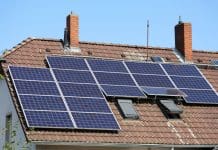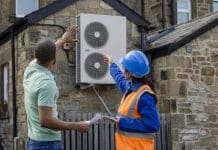The National Insulation Association (NIA) announces the introduction of a new service for Local Authorities and Housing Associations looking for insulation companies to work on their projects…
With the cuts to the Energy Company Obligation (ECO) announced by government last year, an increasing number of Local Authorities and Housing Associations are now unable to secure ECO funding for insulation programmes and are therefore funding these from their own budgets. As a result, the NIA is increasingly being contacted by them asking for help in finding local installers to carry out work on their behalf. Neil Marshall, Chief Executive of the NIA commented:
“Local Authorities and Housing Associations can provide us with the details of their projects and we will then issue expressions of interest and tender requests on their behalf to our members through our electronic communication system. This provides the benefit of avoiding the need to contact lots of different companies and is immediate.
“The NIA is the lead trade body for insulation measures in the UK and our members can provide multi measure solutions. In addition, our members are required to meet our robust membership criteria and adhere to our strict code of professional practice meaning our members provide additional reassurance and peace of mind.”
Insulation for solid walls comprises of either Internal Wall Insulation (IWI), External Wall Insulation (EWI), or a combination of the two known as Hybrid Wall Insulation (HWI), and any option will greatly increase comfort, while also reducing energy bills by up to £455 per year and the associated environmental impact.
The Solutions
IWI typically consists of either laminated insulating plasterboard (known as thermal board) or a built-up system using fibrous insulation such as mineral wool held in place using a studwork frame.
Laminated insulated plasterboard which normally replaces existing lath and plaster is fixed directly to the existing brick. Depending on the system, thermal boards can either be screwed or glued using a dry wall adhesive directly onto the brick work just like standard plaster board. It has the advantage that it can be installed room by room with the tenants in situ. It increases internal surface temperature within a room and also improves response to heating input when heated intermittently. It has the lowest thermal conductivity available and allows installation on damp surfaces without drying periods because it’s hydrophobic.
EWI comprises of an insulation layer fixed to the existing outside wall, with a protective render or decorative finish. Dry cladding offers a wide range of finishes such as timber panels, stone or clay tiles, brick slips (brick effect finish) or aluminium panels. EWI increases the thermal quality of the building – particularly relevant when refurbishing non-traditional housing. It also overcomes moisture and condensation issues, protects the existing building envelope can reduce heating bills by up to 25% as well as greatly improve the appearance of the building.
EWI is a tried and tested method of upgrading the thermal performance and external appearance of existing properties which are literally transformed into warm, energy efficient and attractive homes and buildings. Improving appearance is of particular significance to many local authorities targeting housing projects in poorer areas. Adding EWI on a whole street basis will raise residents’ morale and give a sense a pride in their community.
There are many benefits of EWI including the fact that no living space is lost. There is minimum disruption for the residents as the work can be carried out while they are in their homes and there is no risk of condensation within the property as it is moved to the outside of the system that is being put in place. Also there is minimal maintenance once installed.
Any organisation interested in the new service please email or telephone Bev Hodson at the NIA bev.hodson@nia-uk.org or call 01525 383313
CASE STUDY — SHERWOOD COURT, NOTTINGHAM
Many Local Authorities throughout the UK are now choosing EWI insulation as an energy efficient measure to upgrade their existing housing stock in order to meet the government’s Decent Homes Standard.
Sherwood Court, a two storey sheltered housing complex in Kirby-in-Ashfield, has recently benefitted from government funding, allowing clients Ashfield Homes to begin the major refurbishment on reducing unnecessary heat loss and CO2 emissions.
A Weatherby Epsicon EWI system was chosen as a cost effective solution to a project that would reduce energy usage and carbon emissions whilst protecting and prolonging the external fabric of the building.
The system build up consisted of a layer of 60mm Phenolic Insulation that was mechanically fixed to the substrate of the building. Following the application of a strengthening scrim mesh, embedded into scrim adhesive, a layer of White Dashing Mortar was applied at a thickness of 8-10mm. Whilst still wet, two aggregates chosen and thrown into the mortar, ensuring an even distribution of chippings. The combination of the two aggregates gave a contrasting finish which dramatically uplifted the worn out exterior of the two storey building.
Originally built in 1972, Sherwood Court was failing to meet current building regulations, but with the application of EWI it upgraded the building from starting u-values of 2.1W/m2K to an impressive 0.29W/m2K.
. . . . . . . . . . . . . . . . . . . . . . . . . . . . . . . . . . . . . . . . . . . . . . .
The National Insulation Association (NIA)
Tel: 08451 636363













